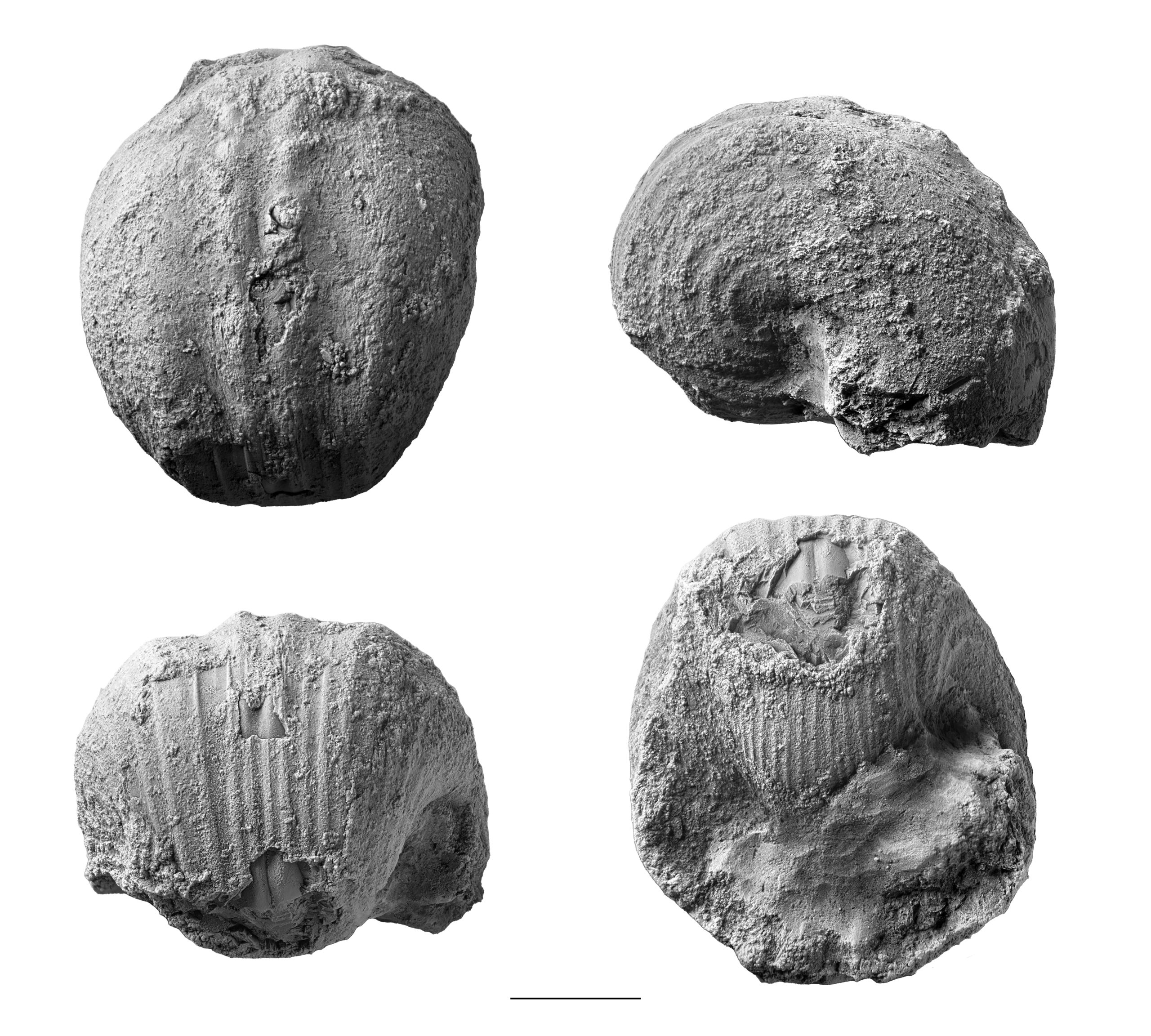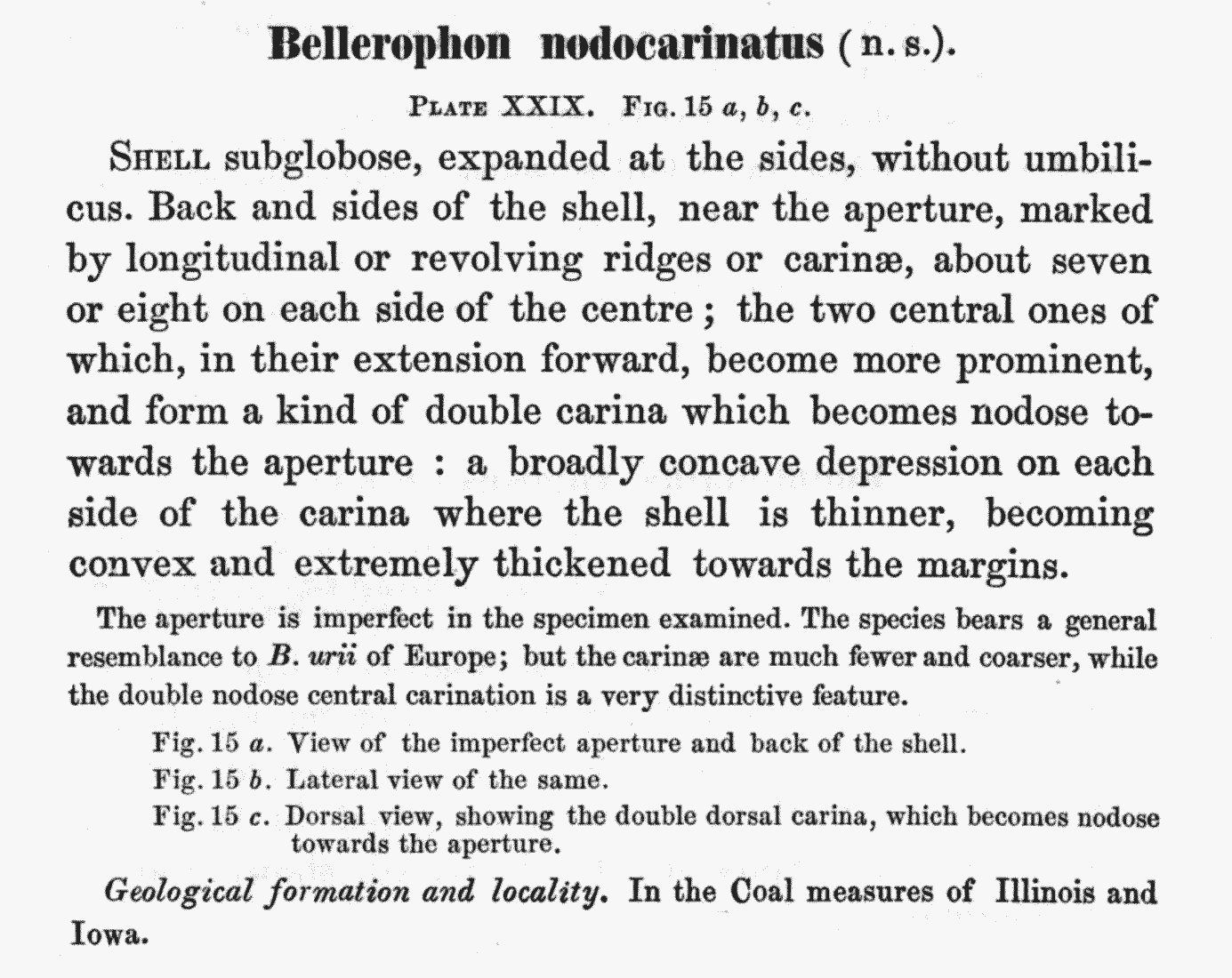The gastropod Bellerophon nodocarinatus (=Euphemites nodocarinatus) was named by Hall in 1858 in a geological report of Iowa. The name means knotty/lumpy kneels (or carina), characterized by the dual lumpy ridges visible from the anterior margin across the shell. Members of Euphemites have spiral lirae that appear in the aperture and extend toward the anterior margin. The whorl width expands as the shell enlarges. Research of the shell layers (Moore 1941) has shown that the creature added the spiral lirae to the shell after primary growth, likely with modification of the original nodose carina feature.
Hall was reporting on fossils from upper and lower coal measures without distinction. He noted that the reported fossils are common in Western Pennsylvania and elsewhere. Hall’s report and figures are shown below.

Additional Reports of Euphemites nodocarinatus
White (1881) named Bellerophon inspeciosus from Talos, New Mexico, but Kues and Batten in 2001 call it synonymous with E. nodocarinatus. Heilprin (1886) reported it from the Mill Creek Limestone (which correlates with the local Ames Limestone), but figured Pharkidonotus percarinatus in the label. It is unknown if there is a printing error or a misidentification. Chow (1951) reported the species again from the same horizon, but the figures could be better for visual identification.
Euphemites nodocarinatus from the Brush Creek limestone
The recovery of intact gastropods from the Brush Creek limestone is challenging. The outside of shells often sticks to the limestone easier than the insides. The steinkern and the shell often separate when breaking rocks during fossil hunting. On a recent trip, specimen CG-0611 was discovered near the margin of the stone itself, giving some relief to this hard-to-recover condition.
The nodose carinae are easy to see. Some sharp spiral lirae are visible on the mid-whorl. Cleaning these are equally difficult using the same methods I use for Pine Creek specimens; the force needed can damage the specimen. Speaking of the Pine Creek limestone, I have not recovered this species from that horizon, but others have (J. Harper 2023, personal comm.)

References
- Chow, M. M., 1951. The Pennsylvanian Mill Creek Limestone in Pennsylvania. Pennsylvania Geological Survey Fourth Series, Bul. G26, 26 p.
- Hall., J., 1858. Palaeontology of Iowa. Report of the Geological Survey of the state of Iowa 1(2):473-724 [plate]
- Heilprin, A., 1886, Description of fossils contained in the [Wyoming Valley limestone beds]. Pennsylvania Geological Survey, 2nd ser., Annual Report for 1885, p. 457, fig. 13
- Kues, B. S., 1984. Pennsylvanian stratigraphy and paleontology of the Taos area, north-central New Mexico. Rio Grande Rift: Northern New Mexico. New Mexico Geological Society Guidebook 35:107-114
- Kues, B. S., and Batten, R. L., 2001. Middle Pennsylvanian gastropods from the Flechado Formation, north-central New Mexico. Journal of Paleontology 75(1, supp):1-95
- Moore, R. C., 1941. Upper Pennsylvanian gastropods from Kansas. State Geological Survey of Kansas Bulletin 38(4):121-162
- Morningstar, H., 1922. Pottsville fauna of Ohio. Ohio Geological Survey Bulletin 25:1-312


